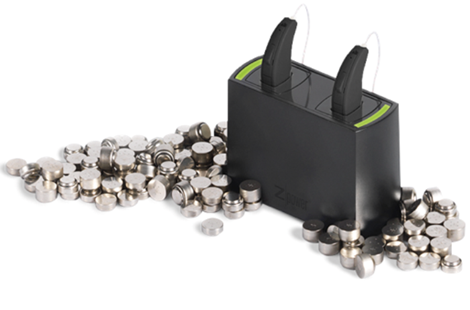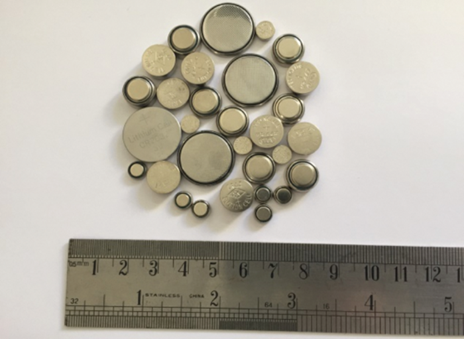They may be similar in size to a watch battery, but there is a drastic difference between the frequency with which hearing aid batteries need to be changed compared to the simple watch battery. Unlike a watch battery, which may last for years, hearing aid batteries usually only last 3-12 days, depending on their size.
Patients who stream audio and music via Bluetooth to their hearing aids can expect to get even fewer days out of their batteries. After new patients get over the shock of how often they are going to need to change the batteries, their next question is inevitably ‘what other options do I have?’
Not only are rechargeable hearing aids more convenient, they are also a near-necessity for patients with poor dexterity, reduced vision, neuropathy in their hands and fingers, and those who have only one functioning hand. Traditional hearing aid batteries are so small and need to be changed frequently, meaning many patients are unable to wear hearing aids, even though they have significant hearing loss, if they do not have the help of family and friends.
The first rechargeable hearing aid batteries to enter the market were nickel-metal hydride (Ni-MH) in 1999. Unfortunately, these batteries do not maintain charge for the full day, especially with Bluetooth audio streaming, and they have a limited number of recharging cycles before they need to be replaced. Not only is this an added cost to the patient, it also means that patients have to return to their audiologists more frequently for hearing aid troubleshooting that, more often than not, results in the need to replace the battery. The other issues with Ni-MH batteries are that they need to be charged for a minimum of six hours and they can be easily overcharged - resulting in a lower life expectancy.

The second type of rechargeable hearing aid battery is silver-zinc (Ag-Zn). These batteries hold their charge longer than Ni-MH batteries and they only need four hours of charging to reach full capacity. However, these batteries, similar to the Ni-MH batteries, only have a one-year life cycle before needing to be replaced. They also have a higher voltage than other batteries, so hearing aids that use Ag-Zn batteries need to have a voltage regulator built into them to prevent damage to the electronics. Needless to say, many patients feel that these types of rechargeable batteries are more of a hassle than a time and money saver.
“Inductive charging uses electro-magnetic induction and, therefore, does not require charging contacts.”
Recently, lithium-ion (Li-ion) rechargeable batteries have been introduced as the new standard in rechargeable hearing aid batteries. Li-ion batteries have a much quicker charging time (30 minutes of charging results in seven hours of usage), a longer life expectancy (approximately four years) and will hold their charge for a full day of usage, even with Bluetooth streaming. Hearing aid manufacturers have also designed inductive chargers for Li-ion batteries. Until recently, rechargeable hearing aid batteries used galvanic charging which requires the user to align the hearing aids precisely on contacts in order to start the charging process. Inductive charging uses electro-magnetic induction and, therefore, does not require charging contacts. This creates a rechargeable hearing aid that is easier to charge, there is no need to open and close a battery door and dirt and debris will not affect charging.

The future of rechargeable hearing aids is looking increasingly like that of smart phones: shorter charge times and longer usage. With the use of Li-ion batteries, the capabilities of hearing aids can, and will, continue to change. The look and design of hearing aids will change, the charging will become even faster, the lifecycle of the batteries will be longer than four years and the hearing aids will become more environmentally friendly. Now that the inconvenience of older rechargeable batteries can be a thing of the past, more and more patients will be able to benefit from this new technology.




